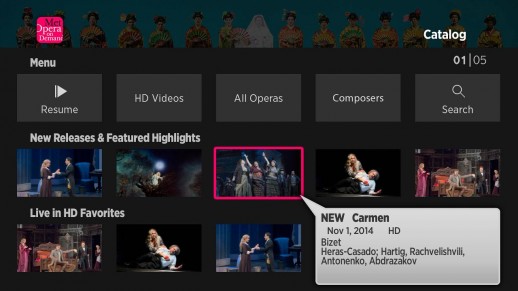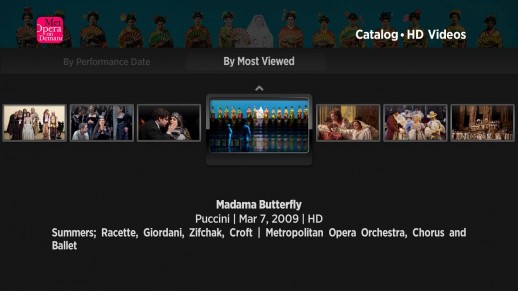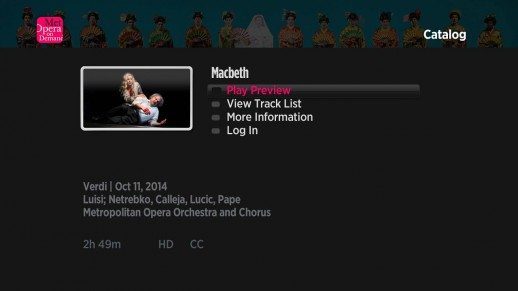

I’ve worked on an industry specific computer for 30 years and as my industry has evolved towards more vendor-specific apps and engines it’s been easy for me to keep up. But when you get home to put up your feet the last thing a lot of us want to do is dive in for an extra helping of technology.
Luckily my Nephew has been the tech-sherpa in my family, guiding me through the rocky shoals from flip to smart phones and helping me with countless computer and IOS updates and upgrades. I was always the kind of person who was good at setting up the television and stereo components but the Messr. Jobs and Gates have their own brands of magic and luckily those things have been drastically simplified in just the past few years.
But how long was I on the 3-DVD’s at a time plan with Netflix? Right up until I was gifted with a Roku by nephew tech-support. Then I bought a new Blu-ray player
for the small TV in my bedroom that was loaded with streaming options. Shortly thereafter I had to up my game by making certain I was pumping all the bandwidth possible through my wireless router which somehow, thanks to Verizon and their ridiculous pricing packages, brought my phone bill down $15. a month.
With the Roku now I’ve got PBS streaming on demand which is free (!) and nifty, Smithsonian Channel (free), YouTube (a ton of opera there and also free) and a host of other options you can rent current films fromm plus Amazon Prime (which frankly is worth it just for the free shipping) plus, of course, my Netflix. Where’s my snacks at?
Now for those of us who grew up in opera-starved Southern California the live telecasts from the Met were practically like national holidays. Our PBS station never knew what it was doing and never tried to foster any kind of classical music or opera audience. They’d do things like run the Richard Tucker Gala at midnight on a weekday. Not surprisingly our PBS station eventually went out of business.

I flirted with a Sirius subscription for a while but they don’t understand that everyone doesn’t live on the east coast, they don’t delay for time zones, and I can’t scamper home from work at 4:30 PM to be held hostage by my radio every night.
When the Met Opera on Demand app was first announced I was intrigued but didn’t see the point of subscribing to watch opera on my iPad (really?) and didn’t have the bandwidth or wherewithall yet to start throwing things up onto the TV from my iPad. Then the Met Opera on Demand app appeared one day in August on my Roku and I immediately signed up for the 7-day free trial and have never looked back. At $14.99 a month, my boss is lucky I come to work at this point.
So let’s start at the very beginning with what’s available. It’s obscene what the Met has been sitting on all this time. Rosa Ponselle in Traviata and Carmen. That should be enough right there for anyone. Then there’s all the Zinka Milanov you could possibly want. Andrea Chenier, Ernani, La Gioconda, Aida and two Forzas. What about Bidú Sayao in La Boheme with Giuseppe Di Stefano or Romeo et Juliette with Jussi Bjorling? Eileen Farrell and Franco Corelli in Gioconda?
Robert Merrill, Richard Tucker, Licia Albanese are all over the place and so is all the Beverly Sills. Now, how about Mary Costa (Disney’s Sleeping Beauty) in Barber’s Vanessa? There’s even a Chenier with Placido Domingo and Martina Arroyo from 1977 and an Adriana Lecouvreur with Montserrat Caballé and Jose Carreras from 1978. Those should be vintage Champagne years for that reason alone.

Then there’s the video. How about the Contes d’Hoffman no one’s seen since it was broadcast in 1988 with Neil Shicoff as the poet, James Morris as all the villians, Gwendolyn Bradley, Roberta Alexander and Tatiana Troyanos as the femmes fatales with Charles Dutoit in the pit? And Leontyne Price’s farewell performance as Aida made me cry all over again.
There’s stuff you dismissed as tacky back in the day. Tacky like the Franco Zeffirelli Don Giovanni (‘cause it certainly wasn’t Mozart’s!) What a drunken Vatican orgy this is: the sets and the costumes make the term “grandiose” seem flaccid and insufficient. Carol Vaness as Donna Anna, the queen of big house Mozart, practically blows the back wall out just during the recitative leading up to “Or sai chi l’onore.” Samuel Ramey and Ferruccio Furlanetto are Batman and Robin, and Jerry Hadley’s very sweet as Tom Hanks/Don Ottavio. Karita Mattila repeats in her Met debut role as Donna Elvira: I forgot she even sang Mozart (and pretty damn well). And that pirate ship of death in the final scene—someone fetch me a cold compress and my salts!
Here’s another revelation. Naturally all of this has been remastered, sound and video. I don’t know what process they’ve used but the vintage audio is clean without much hiss and the range is good depending on how far back you’re going. Earlier than 1950 requires some patience of the ear. The video is very, very, clean. I mean cleaner than when it was first broadcast in the 1980’s. In the case of the Schenk/Levine Ring cycle the streaming version is far superior to the DVD’s that Deutsche Grammophon released commercially. DG, for reasons passing understanding, used the PAL conversions as their masters instead of the NTSC which caused frame and color balance problems as well as shallow image depth. Now it’s like watching it all fresh again.
Meanwhile the Met’s latest commercial releases on DVD and Blu-ray of Macbeth with Anna Netrebko, the new production of Falstaff, and the Renée Fleming Rusalka (with the whole final scene fixed, including Renée’s wig mishap and poor Piotr’s missed high C) are all waiting for you, right now, in the app for the touch of a button.

Then when you go to play video you need to give it a minute or two before you start bobbing around inside the performance. If you move too fast it will either kick you out or you’ll end up with audio and no picture. You also can get a minute (or 3 or 4) of buffering whenever you play, or stop and play again, before the image stabilizes. There’s an enormous amount of content, as you can imagine, and it’s a new platform for the Met so they are working out kinks. If it does kick you out or say it cannot connect just wait a minute and go right back in.
The first time I switched on the subtitles option (yes, sometimes I need them) I thought it was PBS back in 1982 suddenly. Like one of those old labeler guns on black plastic adhesive tape. Luckily, there are a myriad number of settings, within Roku itself on their setting page, for the font, color, size, and opacity of not only the titles but the background they appear on. Pick the white background and the 25% opacity for the background and 100% opacity for the text itself and white or yellow for the actual text color. Font size may be adjusted to your age. And there are plenty of language options so you can sing along.
The rest of the bad news. Only one Boris Godunov and a meager two Turandots appear, both on video. A single Dialogues des Carmelites is audio only. Customer Support tells me they’re adding one video and two audio performances every month. Meanwhile, my foot is tapping under my desk.
Also, currently you can only move from track to track within the audio recordings on the Roku as opposed to being able to fast-forward or back like you can when you’re listening on the iPad app. So if you’re like me and you need to savor Zinka’s ‘Enzo adorato, Ah! come t’amo!” over and over and over again it’s easiest to do it on the iPad. The tracks are well labeled however and all the best bits are titled “Featured” in case you don’t know the words that begin the Rosenkavalier trio. Nifty.
I’ve really just scratched the surface here on what the Met site has, especially the recent HD broadcasts, which are wonderful to have. It goes without saying I’ve recently become very demanding.
The photograph at the top of this article does not actually depict Mr. Mack’s bedroom, which La Cieca is certain is far more luxurious than our artist could ever imagine.
Screenshots courtesy of Met Opera on Demand.

























Comments